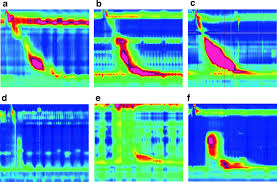Manometry: A Vital Tool in Diagnosing Digestive Disorders at Firouzabadi Hospital

Manometry: A Vital Tool in Diagnosing Digestive Disorders at Firouzabadi Hospital
Introduction
Manometry is one of the advanced tools used to diagnose motility disorders of the digestive system. This technique is used to measure the pressure in various muscles of the digestive tract, particularly in the esophagus, stomach, and intestines. It helps physicians accurately diagnose disorders such as swallowing difficulties, gastroesophageal reflux disease (GERD), and intestinal disorders, allowing them to develop an appropriate treatment plan. Firouzabadi Hospital, with its advanced equipment and specialized team, offers manometry services with high precision to its patients.
What is Manometry?
Manometry is a diagnostic test used to measure pressure within organs such as the esophagus, stomach, and intestines. In this procedure, a thin, flexible tube with pressure sensors is used to measure the pressure at different points in the digestive system. The main goal of this technique is to assess the function of the muscles and valves in the digestive tract. It is especially useful for patients suffering from motility disorders of the digestive system, particularly those with swallowing problems or GERD or intestinal issues.
Importance of Manometry in Diagnosing Digestive Disorders
The digestive system’s motor dysfunction can lead to serious disorders such as difficulty swallowing, chest pain, GERD, and bowel disorders. Manometry helps diagnose these issues with high accuracy. Some of the most common digestive disorders that can be diagnosed with manometry include:
- Esophageal Motility Disorders: Conditions like achalasia (difficulty swallowing), dysphagia (difficulty swallowing), and esophageal spasms, which can cause chest pain, food retention in the esophagus, and difficulty swallowing.
- Gastroesophageal Reflux Disease (GERD): In this disorder, the lower esophageal sphincter does not close properly, allowing stomach contents to flow back into the esophagus, leading to heartburn, chest pain, and difficulty swallowing.
- Esophageal Sphincter Disorders: In these disorders, the esophageal sphincters do not function correctly, causing food to remain in the esophagus or chest pain.
- Intestinal Motility Disorders: Such as chronic constipation or issues that lead to fecal incontinence. Manometry can help diagnose these disorders as well.
Types of Manometry
Manometry is divided into two main types:
- Esophageal Manometry: This type of manometry is specifically used to measure the pressure in the esophageal muscles and sphincters. This test is commonly used to evaluate the function of the lower esophageal sphincter in patients suffering from GERD and swallowing difficulties.
- Anorectal Manometry: This type of manometry is used to assess the function of the muscles in the colon and rectum. It is helpful in diagnosing motility disorders of the intestines, chronic constipation, and fecal incontinence.
Benefits of Manometry in Diagnosis and Treatment
- High Accuracy: Manometry helps diagnose digestive disorders with high accuracy by measuring the pressure at various points in the digestive tract.
- Non-invasive: This test is non-invasive and does not require surgery. Patients can resume their daily activities after the test.
- Effective in Treatment Planning: Using manometry results, doctors can determine the appropriate treatment for the patient. Treatments may include dietary changes, medications, or, in some cases, surgery.
- Precise Diagnosis of Sphincter Disorders: Manometry is particularly useful in evaluating the function of the sphincters in the esophagus and intestines, helping diagnose issues such as GERD and bowel disorders.
The Manometry Procedure at Firouzabadi Hospital
At Firouzabadi Hospital, the manometry procedure is conducted as follows:
- Patient Preparation: Before the test, the patient is instructed to follow specific guidelines such as fasting or adjusting medications based on the physician's advice.
- The Test Procedure: A thin, flexible tube with pressure sensors is inserted through the nose or mouth and guided to the esophagus or intestines. Pressure is measured at different points along the digestive tract.
- Result Analysis: After the test, the collected data is analyzed, and the physician quickly evaluates the results to determine the best treatment plan for the patient.
Advanced Services at Firouzabadi Hospital
Firouzabadi Hospital offers manometry services with high precision and quality, utilizing advanced equipment and a specialized team. The hospital is highly experienced in diagnosing and treating digestive disorders, providing a wide range of diagnostic procedures such as endoscopy, colonoscopy, and more. This enables the accurate diagnosis of digestive system issues and offers comprehensive treatment plans for patients.
Expert Medical Team at Firouzabadi Hospital
The physicians and specialists at Firouzabadi Hospital possess extensive experience and knowledge in treating digestive disorders. Using the latest medical technology, they perform manometry procedures with precision and quality, helping patients recover quickly. The hospital's medical team provides effective treatment solutions based on each patient's condition.
Additional Information About Manometry
- What is Meant by Pressure in Manometry: The pressure of different muscles in the digestive system is measured during this test. These measurements indicate whether the muscles are functioning properly.
- Complementary Tests: In some cases, complementary tests such as imaging studies or biochemical tests may be helpful for accurate diagnosis.
- Test Duration: Typically, the manometry test takes less than 30 minutes, and the results are analyzed immediately.
Conclusion
Manometry is a vital tool in diagnosing and treating motility disorders of the digestive system, including esophageal motility disorders, GERD, and intestinal problems. Firouzabadi Hospital offers manometry services with advanced equipment and a specialized medical team, ensuring accurate diagnosis and effective treatment. This technique helps physicians develop optimal treatment plans to improve patients' quality of life using non-invasive methods.


comment